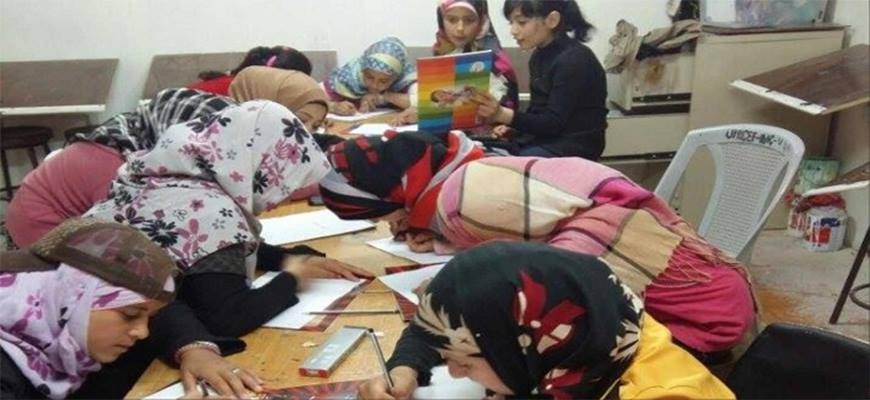
04 May 2015
Isra al-Fadil, 29, a Syrian refugee has transformed her house into a ceremony to work and also learn children drawing assets. She was not limited at the borders of the small Atelier but painted murals outside the camp by the request of Zaatari municipality and village Sabha and shw was also honored by “Lana Mamcg” the Minister of Culture of Jordan for her efforts.
Isra said, The United Nations Development Programme asked her, about a week ago, to continue the drawing on the walls of a school outside the camp, but she wasn’t granted a permession to leave the camp by those who are responsible.
In her Atelier in the camp, she supervised a group of children performed paintings collected in an exhibition titled “Colors from Zaatari,” showed in the capital, Amman, and then transferred to be shown in Dubai.
Isra said, she felt proud of the children’s drawings, and a Syrian organization organized exhibitions outside the camp and marketed for the boards, as they get them on the support for the continuation of this work.
She said, four of her paintings were sold at the show, and the price received last winter was used to purchase children’s socks and distributed them in the camp.
Isra added “I feel like I did not get my moral rights, and theorganization stopped paying the amount that used to cover the drawing expenses for kids, however I am a volunteer by my time and effort and did not get any salary for my work with children.”
Although she is forced to work full-time in an organization within the camp for sustaining her children, Isra did not close the , and continued to receive children on Friday and Saturday, with her paying for the drawing tools expenses of from her salary which is $ 200, and “A friend donated to pay half of the costs in support of the children.”
She pointed out that the enthusiasm and desire, which shown by children about drawing lessons, made her more determined to continue despite the difficult circumstances, and said, “Unfortunately, the space is limited in the caravan, so I keep 15 children only, and I paint with some of the children since two years and they have amazed me.”
She added that children tended to draw the war and destruction in the beginning, and she tried to suggest to them more positive ideas and asked them to draw what express their dreams and aspirations and their homes that they love and want to return to in Syria, and the beautiful nature where they lived.
Isra plays the role of mother and father because of her husband’s illness, and says that she sometimes work two shifts per day to secure her family requirements, and “there are those who propose to live outside the camp, but I adapted to the difficulties of life here, however renting a house outside the camp beyond my abilities, I do not want to receive charity, and I am proud that I am able to support my children without being forced to a ask for help.”
Kenana, Isra’s daughter (12 years), inherited drawing love from her mother, and often sits next to her mother and start emulating and learning from them. She says that her daughter shows interest and talent in drawing, and expects to surpass her mother if received adequate attention in the future and had education in this area.

 عربي
عربي